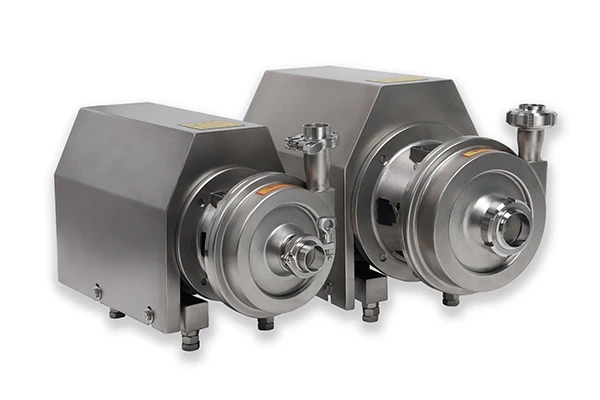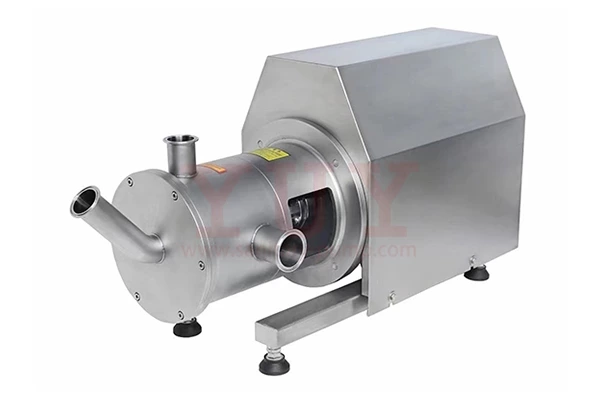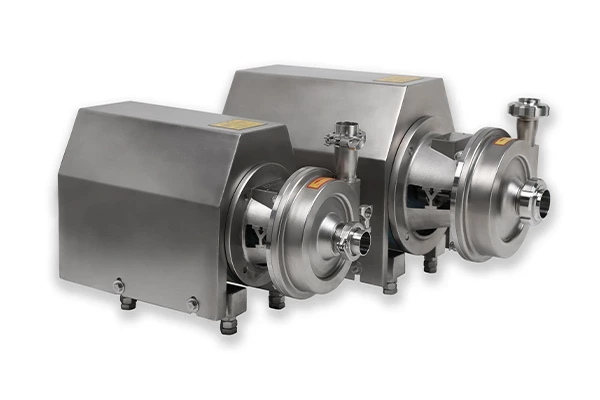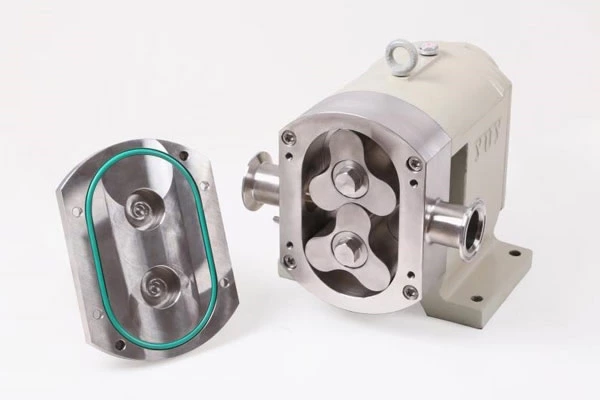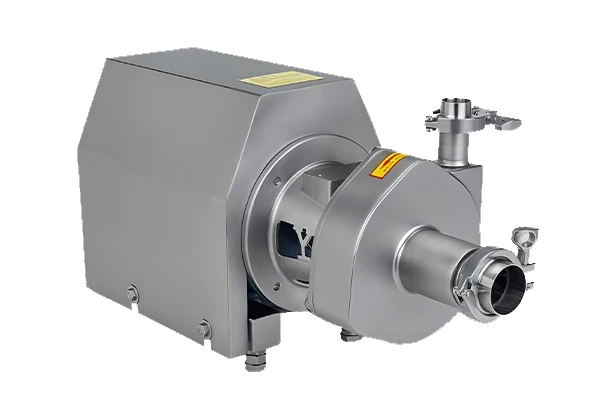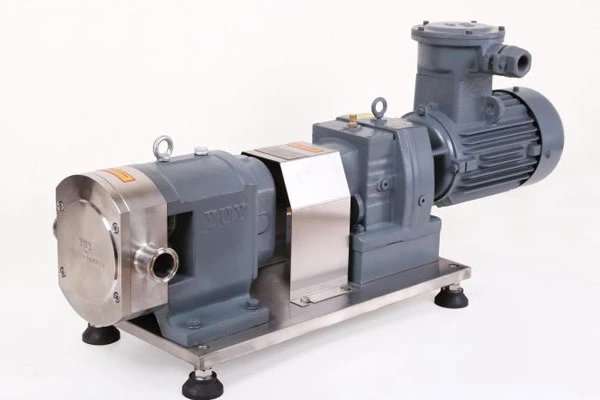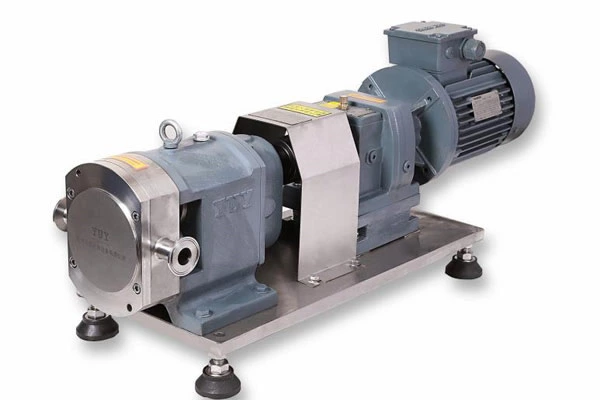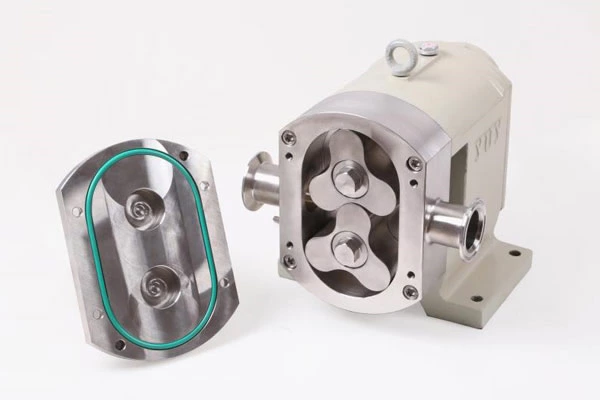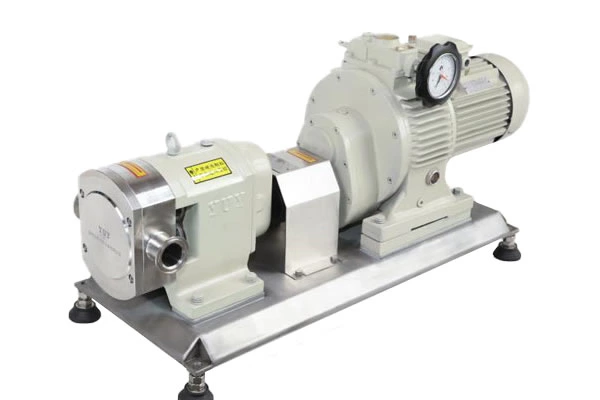Three Minutes To Show You The Difference Between Positive Displacement Pump And Centrifugal Pump
Each pump stirs the fluid in its own way, and each pump has its own operating characteristics and curves. But the important thing is that the centrifugal pump affects the flow rate of the liquid, resulting in a certain pressure at the discharge port. In contrast, when a positive displacement pump stirs the liquid, it first obtains a certain amount of liquid and sends the liquid from the suction port to the discharge port. For Sanitary Centrifugal Pump, pressure is formed first, and then flow is generated. For a positive displacement pump, flow is formed first, and then pressure appears. The main difference between a positive displacement pump and a centrifugal pump:
1. The difference between the medium of a positive displacement pump and a centrifugal pump:
(1) The speed of a positive displacement pump is proportional to the flow rate, such as a gear pump, a screw pump, a plunger pump, etc. For example, when their speed is 100 rpm, the flow rate is 1 cubic meter, and when it is 1000 rpm, it can be understood as 10 cubic meters, but in fact there is a little efficiency loss, and the flow rate is about 9.5-9.8 cubic meters.
(2) Centrifugal pumps rely on the high-speed rotation of the motor to throw the medium (generally a medium with low viscosity: such as water, diesel, kerosene, gasoline, etc.) out through the flow channel of the impeller.
(3) The difference between positive displacement pumps and centrifugal pumps is that positive displacement pumps can transport media with relatively high viscosity, such as heavy oil, viscous oil, asphalt and other media with high viscosity; centrifugal pumps can only transport media with low viscosity, and their transport viscosity can only be lower than 3Cst (centistokes).
2. The difference in performance between positive displacement pumps and centrifugal pumps:
In order to be able to select the appropriate type from various types of pumps, it is important to understand the differences in the working characteristics of the two pumps. When looking at their working performance table (Figure 1a), you can see how different their working principles are. Centrifugal pumps have a variable flow rate that depends on pressure (or pressure head), while positive displacement pumps have a more or less constant flow rate that is independent of pressure.
3. The difference in viscosity between positive displacement pumps and centrifugal pumps:
Viscosity plays an important role in the mechanical efficiency of the pump. Since centrifugal pumps run at motor speed, their efficiency will decrease as the viscosity increases due to increased friction losses in the pump. Note that the efficiency of centrifugal pumps decreases rapidly as viscosity increases.
4. Differences in performance between positive displacement and centrifugal pumps:
Another major difference is the effect of viscosity on pump capacity. You will notice in the flow chart that centrifugal pumps will experience a decrease in flow as viscosity increases, while positive displacement pumps actually experience an increase in flow. This is due to the higher viscosity liquid filling the voids in the positive displacement pump, resulting in a higher volumetric efficiency. Effect of viscosity on pump flow. Keep in mind that there will also be increased pipe losses in the system. This means that the flow in a centrifugal pump will decrease further as the pump differential pressure increases.
5. Differences in efficiency between positive displacement and centrifugal pumps:
Kinetic and positive displacement pumps also exhibit different characteristics when considering the effect of differential pressure on the mechanical efficiency of the pump. How the pump efficiency is affected by the increasing pressure. For positive displacement pumps, the efficiency actually increases with increasing pressure, while centrifugal pumps have a best efficiency point (BEP). On both sides of this point, the overall pump efficiency will drop significantly.
6. The difference between the inlet conditions of positive displacement pumps and centrifugal pumps:
The requirements for inlet conditions of these two types of pumps are also quite different. Centrifugal pumps require a certain amount of liquid in the pump in advance to form a pressure difference. A dry pump without liquid cannot start automatically. Once started, the centrifugal pump needs to meet the clear inlet pressure requirements recommended by the manufacturer.
Since the positive displacement pump stirs the liquid by the expansion and contraction of the liquid volume, a negative pressure will be formed at the inlet, so the positive displacement pump can start and prime by itself. In some cases, this is the only determining factor whether to choose a positive displacement pump or a centrifugal pump.
Summary of the difference between positive displacement pumps and centrifugal pumps:
In general, when the viscosity exceeds 150 cP, it is necessary to be able to predict the flow rate within a wide range, or when you want the pump to start and prime by itself, you can consider using a positive displacement pump. When choosing between a centrifugal pump and a positive displacement pump, you must also consider energy consumption, because there may be a considerable difference in energy consumption between the two pumps. This is especially important at flow rates below 100 gpm, where the efficiency of a centrifugal pump drops even more.
